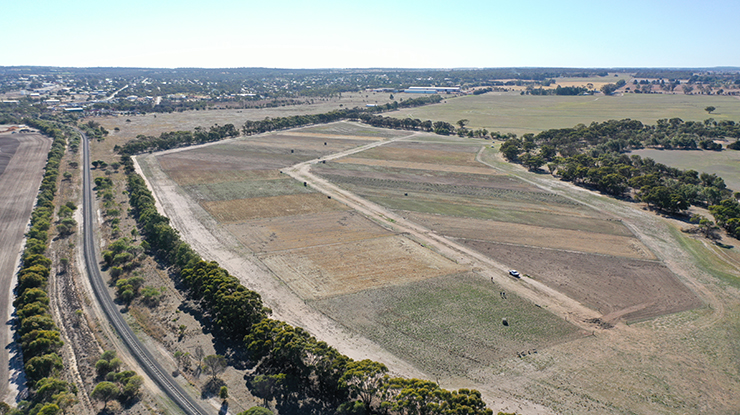Solving the need for feed
29 March 2023
 The FEED365 project is evaluating different fodder options for livestock in Mediterranean environments.
The FEED365 project is evaluating different fodder options for livestock in Mediterranean environments.
Increasingly hot, dry and variable seasons are creating a fresh set of challenges for sheep producers in southern WA – but a new SheepLinks project is set to fill widening feed gaps and take flock productivity to the next level.
Jointly funded by MLA and the WA Department of Primary Industries and Regional Development (DPIRD), the FEED365 project aims to design forage systems providing quality, year-round fodder for livestock grazing in Mediterranean environments.
DPIRD’s Senior Research Scientist, Dr Daniel Real, said the project is evaluating forage systems that will produce all year round.
“We’re also evaluating forages to see what forage mixtures drive the highest production in terms of advancing live weight gain in sheep flocks,” he said.
Testing the waters
With initial modelling of potential new and modified feedbase strategies now complete, trials are currently underway to assess the productivity of these forage mixtures at DPIRD’s Katanning Research Station, as well as at six other demonstration sites hosted by grower groups across the state.
“The FEED365 project is evaluating a large range of commercial forage species in half-hectare plots, from annuals, perennials, legumes, herbs, shrubs, grasses and more,” Daniel said.
“At each demonstration site, we’ve concentrated on forage for those times of the year when they don’t have good options for feed, and we’ve worked with grower groups to explore different options for these feed gaps based on their location, annual rainfall and soil type.”
Finding fodder
By the time research is completed in 2025, the project will have defined forage mixtures for each region that will deliver live weight gains year-round.
“With bio-economic modelling, we will have identified the complementary forage species and how they should be sown in an area for optimal forage and returns,” Daniel said.
“For example, we can recommend producers sow species A in 10% of the area, species B in 30% of the area and so on.
“We’ll be able to advise producers which forage option will drive the most production in each season, and how they should combine it with other options to have the highest levels of production all year round.”
As research continues producers will be able to learn about the project’s findings by attending a series of field days at the Katanning Research Station and engaging with on-farm demonstration sites. The optimised forage systems developed by FEED365 are set to be implemented in at least 30 sheep enterprises in southern WA by 2025, with more expected to follow.
Here’s your seasonal action plan
- Determine the cost-benefit of resowing pastures with MLA’s Pasture improvement calculator.
- Compare and assess the performance of more than 100 pasture varieties using the Pasture Trial Network tool.
- Check out this ‘How do I successfully establish a new pasture?’ fact sheet for practical tips to successfully establish a new pasture this autumn.
Join us for the FEED365 and FutureSheep field day on 5 April at Katanning, WASheep producers can take their first look at the major FEED365 trial site with 48 plots and 16 different treatments across two soil types – providing a multitude of options for autumn feed gap management. This is the first ‘autumn look’ at what the varieties and treatments have to offer. Field day highlights:
Click here for more information and to register. |


